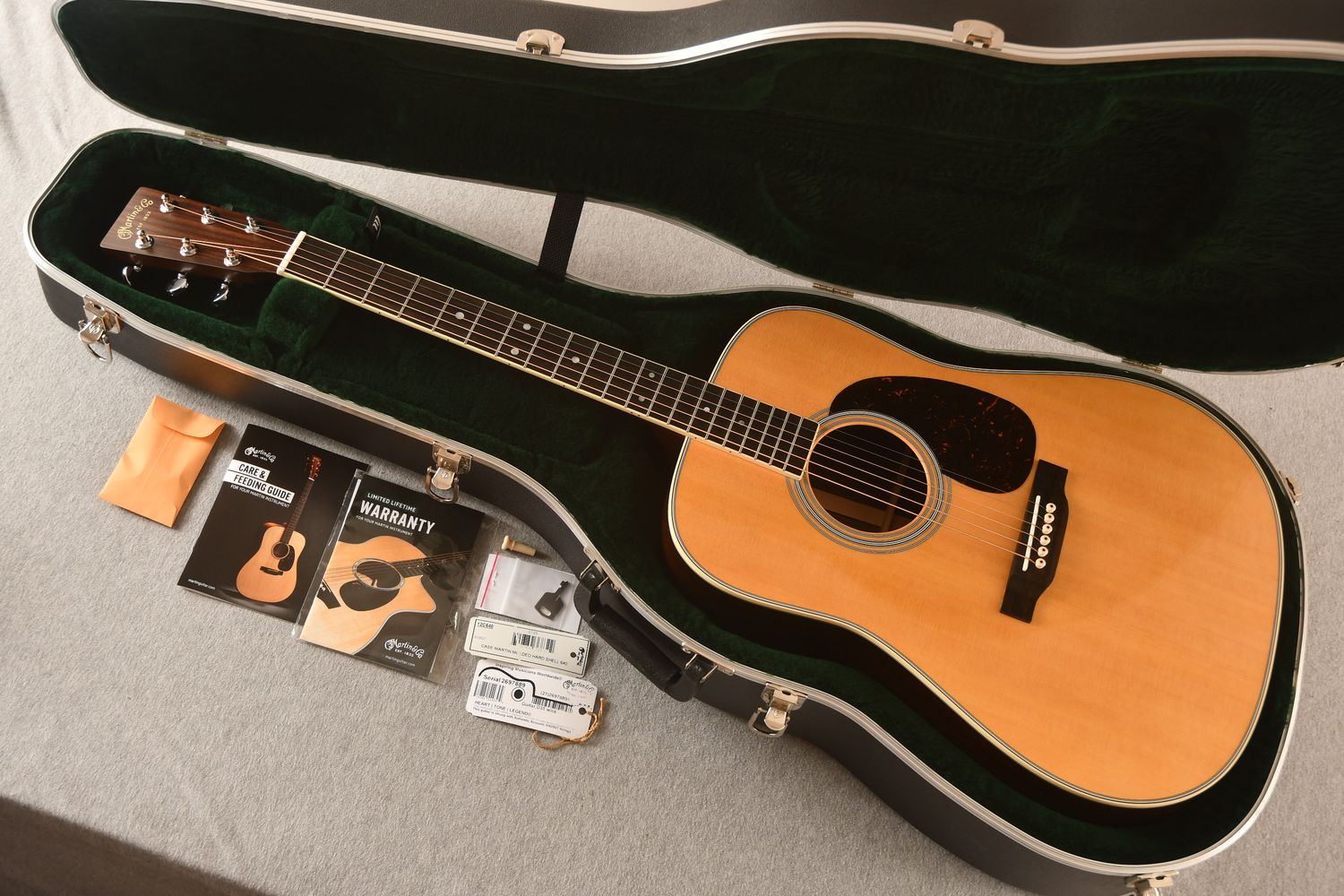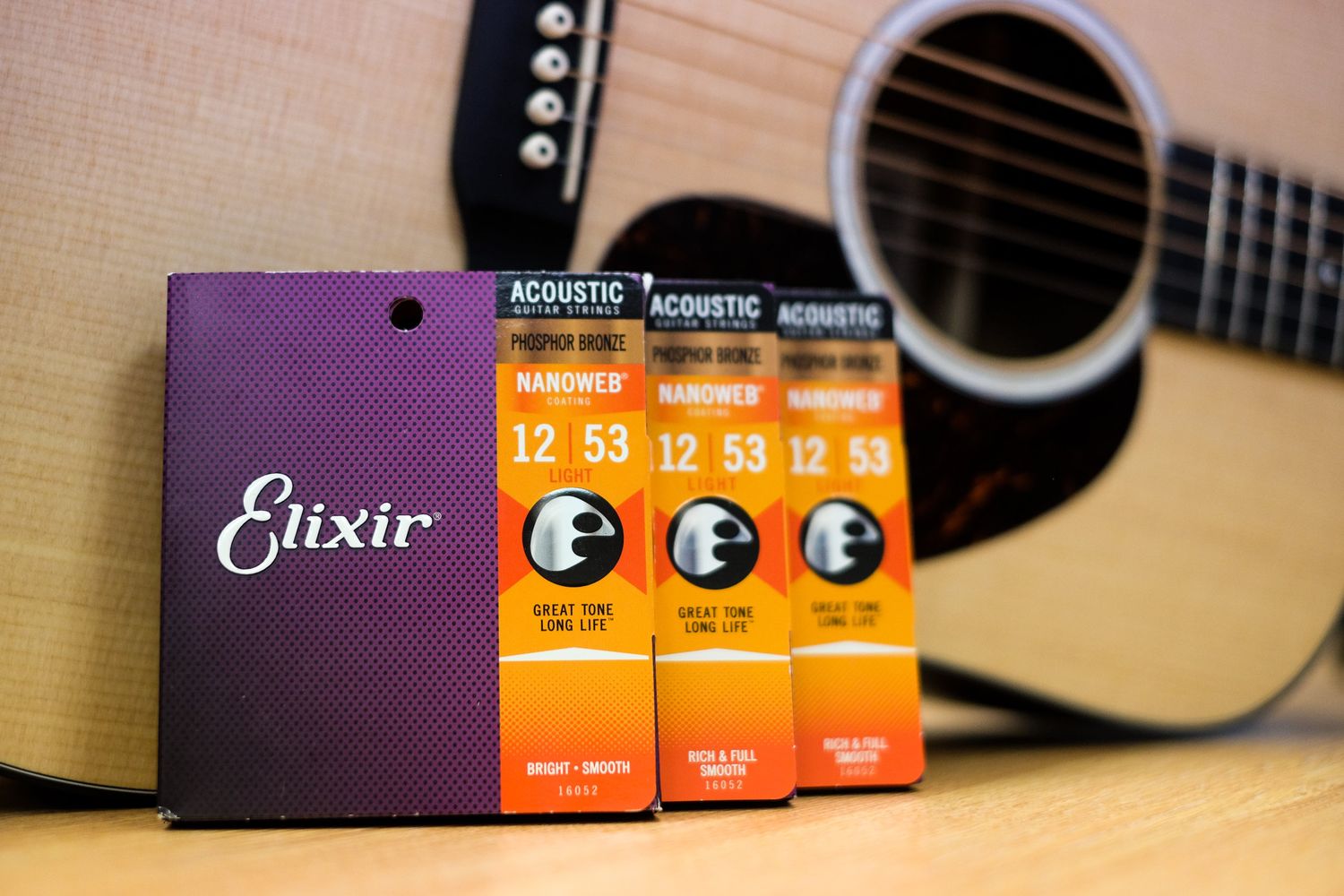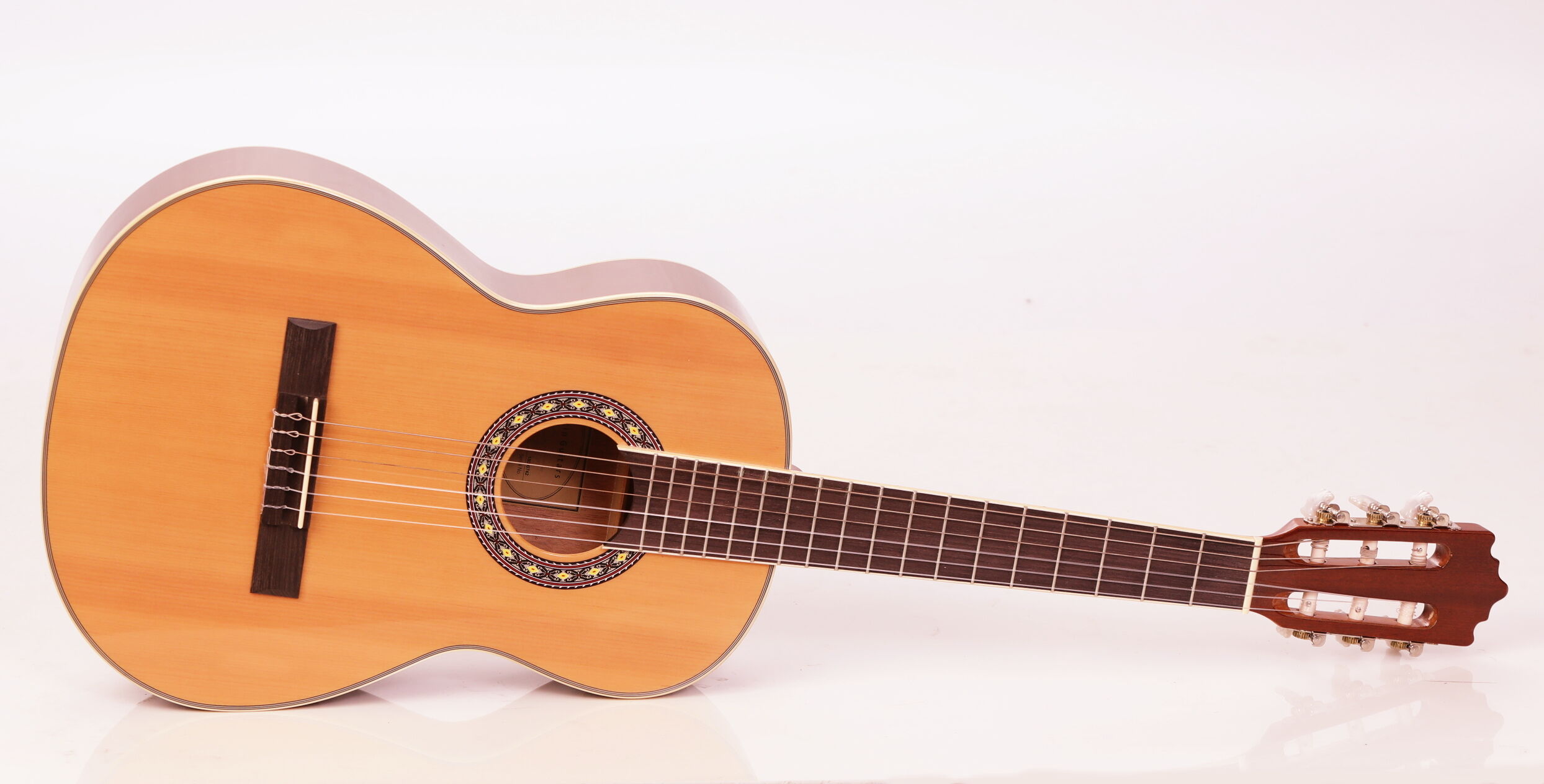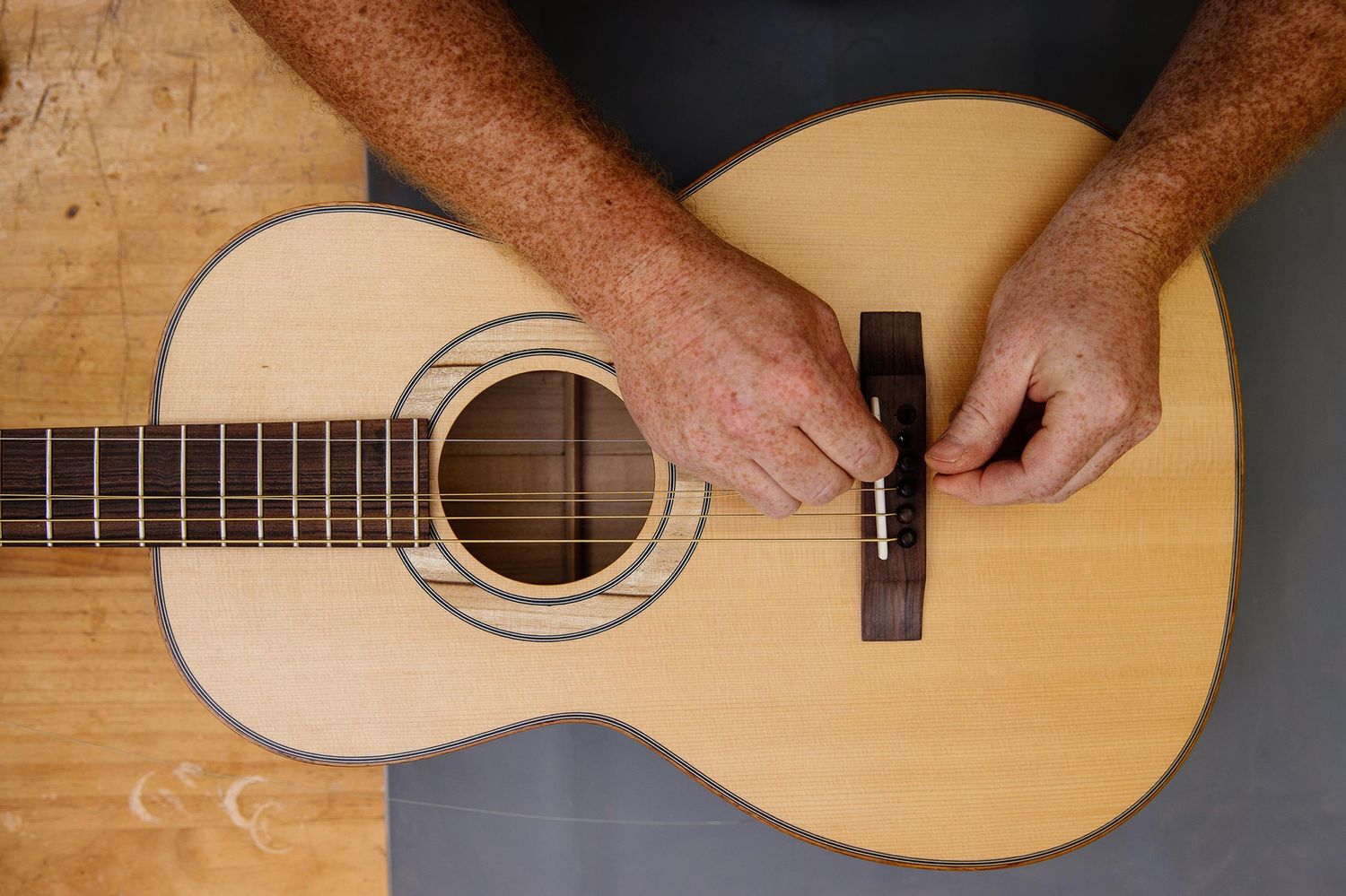Home>Production & Technology>Acoustic>What Are The Notes On The Acoustic Guitar


Acoustic
What Are The Notes On The Acoustic Guitar
Published: March 11, 2024
Learn the notes on the acoustic guitar and improve your playing with our comprehensive guide. Master the fretboard and enhance your acoustic guitar skills today!
(Many of the links in this article redirect to a specific reviewed product. Your purchase of these products through affiliate links helps to generate commission for AudioLover.com, at no extra cost. Learn more)
Table of Contents
Introduction
The acoustic guitar is a timeless instrument that has captivated music enthusiasts for generations. Its warm, resonant tones and versatile nature make it a beloved companion for musicians across various genres. Whether you're a beginner eager to learn the basics or a seasoned player looking to delve deeper into the instrument's intricacies, understanding the fundamental aspects of the acoustic guitar is essential.
From the gentle strumming of folk melodies to the fiery riffs of rock anthems, the acoustic guitar holds a special place in the hearts of music lovers. Its melodic allure and rhythmic prowess have made it a staple in countless iconic compositions, showcasing its ability to evoke emotions and set the mood in any musical piece.
As we embark on this exploration of the acoustic guitar, we'll unravel the mysteries of its tuning, chord shapes, and playing techniques. By delving into these aspects, we'll gain a deeper appreciation for the instrument's rich sonic tapestry and its boundless potential for creative expression.
So, grab your acoustic guitar, tune those strings, and let's embark on a melodious journey through the enchanting world of acoustic guitar mastery. Whether you're strumming in solitude or jamming with friends, the acoustic guitar is a gateway to a realm of musical enchantment that knows no bounds.
Standard Tuning
Standard tuning is the most widely used tuning for the acoustic guitar, providing a balanced foundation for playing a wide range of musical styles. In standard tuning, the six strings of the guitar are tuned to the following notes from the lowest (thickest) string to the highest (thinnest) string: E, A, D, G, B, and E. This arrangement allows for the exploration of various chord shapes, scales, and melodies with relative ease.
The low E string, also known as the sixth string, is tuned to E2, which resonates with a deep, rich tone. Moving up, the A string is tuned to A2, followed by the D string tuned to D3, the G string tuned to G3, the B string tuned to B3, and finally, the high E string tuned to E4. This symmetrical tuning facilitates the execution of chord progressions and scale patterns, making it an ideal starting point for beginners and a versatile option for seasoned players.
Standard tuning serves as a universal reference point for guitarists, enabling seamless communication and collaboration during musical endeavors. It forms the basis for learning essential chord shapes, scales, and song arrangements, laying a solid groundwork for musical exploration and creativity.
Whether you're strumming open chords, fingerpicking intricate melodies, or unleashing powerful riffs, standard tuning provides a familiar and reliable framework for expressing musical ideas. Its intuitive layout and harmonic balance make it an indispensable tool for crafting captivating compositions and engaging in musical improvisation.
As you acquaint yourself with standard tuning, you'll discover the endless possibilities it offers for crafting captivating melodies and harmonies. The familiarity and versatility of standard tuning make it an invaluable asset for any guitarist seeking to expand their musical horizons and unlock the full potential of the acoustic guitar.
In essence, standard tuning serves as the cornerstone of the acoustic guitar's sonic palette, offering a harmonious foundation for musical expression and innovation. Its universal appeal and adaptability make it an essential component of the guitarist's toolkit, empowering players to embark on a melodic journey filled with boundless creativity and sonic exploration.
Open Tunings
Open tunings are an intriguing facet of acoustic guitar playing, offering a unique sonic landscape that diverges from the familiar territory of standard tuning. Unlike the conventional arrangement of notes in standard tuning, open tunings involve tuning the guitar strings to form a chord when strummed open, hence the name "open" tunings. This distinctive approach unlocks a wealth of harmonic possibilities, allowing guitarists to explore rich, resonant textures and experiment with unconventional chord voicings.
One of the most popular open tunings is Open D, where the guitar is tuned to form a D major chord when strummed open. The strings are tuned to the notes D-A-D-F#-A-D, creating a lush and vibrant sonic environment that resonates with a captivating warmth. Open G tuning is another widely embraced option, featuring the notes D-G-D-G-B-D when strummed open, evoking a bright and jubilant tonal quality that lends itself well to folk, blues, and slide guitar playing.
Exploring open tunings opens up a world of creative possibilities, allowing guitarists to craft evocative soundscapes and unearth new melodic pathways. The unique harmonic character of open tunings infuses compositions with a sense of depth and resonance, enriching the sonic tapestry with captivating textures and emotive nuances.
In addition to Open D and Open G, numerous other open tunings, such as Open C and Open E, offer their own distinct sonic flavors, each with its own set of advantages and expressive potential. These tunings provide a fertile ground for musical exploration, inviting players to experiment with unconventional chord shapes, resonant drones, and ethereal harmonies.
Embracing open tunings can breathe new life into a guitarist's creative endeavors, inspiring fresh musical ideas and fostering a deeper connection with the instrument. The harmonic richness and expressive freedom offered by open tunings empower players to embark on a sonic journey filled with boundless creativity and artistic discovery.
Whether crafting soul-stirring ballads, exploring bluesy improvisations, or delving into folk-inspired compositions, open tunings serve as a gateway to a world of musical enchantment that transcends the confines of traditional guitar playing. By embracing the allure of open tunings, guitarists can unlock a realm of sonic possibilities and embark on a melodic odyssey that knows no bounds.
Common Chord Shapes
Mastering common chord shapes is a pivotal aspect of acoustic guitar proficiency, laying the groundwork for crafting captivating melodies and harmonies. These fundamental chord shapes serve as building blocks for countless musical compositions, providing a versatile toolkit for expressing a wide range of emotions and moods through music.
One of the most ubiquitous chord shapes is the open C major chord, which resonates with a bright and uplifting tonal quality. This chord is formed by placing the index finger on the first fret of the B string, the middle finger on the second fret of the D string, and the ring finger on the third fret of the A string. Strumming from the A string produces a harmonious C major chord that evokes a sense of optimism and cheerfulness.
Another essential chord shape is the open G major chord, renowned for its vibrant and jubilant sonic character. To form this chord, the middle finger is placed on the third fret of the low E string, the index finger on the second fret of the A string, and the ring finger on the third fret of the high E string. Strumming from the low E string yields a resonant G major chord that exudes a spirited and uplifting vibe, making it a staple in folk, rock, and country music.
The open D major chord is equally indispensable, boasting a rich and resonant tonal quality that adds depth to musical compositions. This chord is crafted by placing the index finger on the second fret of the G string, the ring finger on the third fret of the B string, and the middle finger on the second fret of the high E string. Strumming from the D string produces a captivating D major chord that infuses compositions with a sense of warmth and vitality.
Additionally, the open E major chord is a cornerstone of acoustic guitar playing, offering a powerful and emotive sonic presence. This chord is formed by placing the index finger on the first fret of the G string, the middle finger on the second fret of the A string, and the ring finger on the second fret of the D string. Strumming from the low E string yields a compelling E major chord that resonates with a bold and assertive tonal quality, making it a versatile choice for a wide array of musical genres.
By mastering these common chord shapes and exploring their harmonic interplay, guitarists can unlock a world of creative possibilities and embark on a melodic journey filled with boundless expression and artistic innovation. Whether crafting soul-stirring ballads, exploring bluesy improvisations, or delving into folk-inspired compositions, these fundamental chord shapes serve as a gateway to a realm of musical enchantment that transcends the confines of traditional guitar playing.
Playing Techniques
Playing techniques are the essence of acoustic guitar mastery, encompassing a diverse array of approaches that elevate musical performances to captivating heights. From delicate fingerpicking patterns to dynamic strumming styles, the art of acoustic guitar playing is enriched by a myriad of techniques that imbue compositions with depth, emotion, and rhythmic vitality.
Fingerpicking, also known as fingerstyle playing, is a technique that involves plucking the strings with the fingertips or fingernails of the picking hand. This approach allows for intricate melodic patterns, harmonious arpeggios, and expressive nuances, enabling guitarists to weave captivating tapestries of sound with remarkable dexterity and finesse. Fingerpicking techniques open the door to a world of melodic exploration, offering a rich palette of tonal colors and dynamic textures that breathe life into musical compositions.
Strumming, a fundamental technique in acoustic guitar playing, involves sweeping the fingers or a pick across the strings to produce rhythmic patterns and chordal accompaniments. The art of strumming encompasses a wide spectrum of styles, ranging from gentle, flowing strums that evoke a sense of tranquility to vigorous, percussive strums that infuse compositions with energy and drive. By mastering various strumming patterns and dynamics, guitarists can imbue their performances with a compelling sense of rhythm and momentum, enhancing the overall musical experience.
Incorporating percussive elements into acoustic guitar playing adds an engaging dimension to musical performances, creating rhythmic accents and dynamic textures. Techniques such as palm muting, string slapping, and tapping expand the sonic possibilities of the instrument, allowing guitarists to infuse their compositions with percussive flair and expressive flair. These percussive techniques not only enhance the rhythmic foundation of the music but also add a layer of visual and auditory excitement to live performances.
Furthermore, the utilization of harmonics, both natural and artificial, introduces ethereal and shimmering tones to acoustic guitar compositions. By delicately touching the strings at specific nodal points, guitarists can produce bell-like harmonics that embellish melodies and add a touch of magic to their playing. The interplay of harmonics with conventional fretted notes creates a captivating sonic tapestry that elevates the emotional resonance of the music, captivating listeners with its otherworldly allure.
By embracing these playing techniques and integrating them into their musical repertoire, guitarists can unlock a world of expressive possibilities and embark on a melodic odyssey that transcends the confines of traditional guitar playing. Whether crafting soul-stirring ballads, exploring bluesy improvisations, or delving into folk-inspired compositions, these techniques serve as a gateway to a realm of musical enchantment that knows no bounds.
Conclusion
In conclusion, the acoustic guitar stands as a timeless emblem of musical expression, weaving a rich tapestry of melodies, harmonies, and rhythms that resonate with the human spirit. From the familiar terrain of standard tuning to the evocative realm of open tunings, the acoustic guitar offers a boundless canvas for artistic exploration and sonic innovation. By delving into the nuances of common chord shapes and embracing a diverse array of playing techniques, guitarists can unlock a world of creative possibilities and embark on a melodic odyssey that transcends the confines of traditional guitar playing.
As we reflect on the captivating journey through the enchanting world of acoustic guitar mastery, it becomes evident that the instrument's allure lies not only in its melodic resonance but also in its ability to evoke emotions, tell stories, and create connections that transcend language and cultural barriers. The acoustic guitar serves as a universal language of melody and rhythm, uniting people from all walks of life in a harmonious symphony of musical expression.
Furthermore, the exploration of standard tuning and open tunings unveils a spectrum of harmonic colors and tonal textures, inviting guitarists to craft evocative soundscapes and unearth new melodic pathways. The harmonic richness and expressive freedom offered by these tunings empower players to infuse compositions with depth, resonance, and emotive nuances, fostering a deeper connection with the instrument and the music it brings to life.
Moreover, the mastery of common chord shapes and playing techniques serves as a gateway to a realm of musical enchantment that transcends the confines of traditional guitar playing. By embracing these foundational elements, guitarists can unlock a world of expressive possibilities and embark on a melodic odyssey filled with boundless creativity and artistic discovery.
In essence, the acoustic guitar is not merely an instrument; it is a vessel for human emotion, a conduit for creative expression, and a source of boundless inspiration. Whether strumming in solitude or performing on stage, the acoustic guitar invites us to embark on a melodic journey that knows no bounds, a journey filled with the timeless resonance of six strings and the infinite possibilities they hold.











